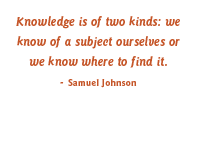| People |
| Philosophy |

 |
|
|
|
 |
<< GO BACK Going Green: A Sustainable Change Download/Print: Small and large, nonprofit and for profit, many organizations today understand the benefits of going green. In addition to a positive impact on the bottom line from reduced energy costs, instituting green standards can result in improved employee morale, greater brand strength, enhanced marketing opportunities, and increased client loyalty. However, it's not enough to simply talk about being ecology-minded; organizations must demonstrate their environmental values by implementing changes that are effective and sustainable something that is easier said than done. Why? Because change is inherently unsettling for people at all levels of an organization. During unfamiliar challenges, all eyes will look to the leadership team for direction and support. The leaders' ability to establish a systematic framework for transformation while retaining the organization's unique culture and identity will ultimately determine the outcome of the venture. Although no single methodology works for all organizations, there is a set of guidelines that can be adapted to create sustainable change. Start at the Top Most change initiatives fail because leadership does not have a clear vision. Without a clearly articulated vision, people are confused about the purpose of the change and the expected outcome. Bringing clarity to the vision process means answering such questions as: Why do we need to change? What will happen if we don't? What will success look like? What's the plan for getting there? Next, leadership and management must ensure that the organization's policies and procedures are aligned with that vision. Such things as modifying job descriptions and hiring processes to incorporate tasks and expectations for green practices, and providing appropriate training for all employees, are important to successfully redirecting group behavior. Incentives can play a major role in demonstrating the organization's bias toward having a green culture (or in frustrating the momentum for change). Performance evaluations, compensation, and informal rewards and recognition should be tied to green practices. Look for things that are going right, publicize and celebrate them, and make sure that there are successes by designing some fast-results goals into your plan. Provide Tools for Success Long-term transformation must occur at the level of the individual a critical component that can be overlooked in a rush to implement the latest and greatest initiative. Providing employees with adequate resources in the form of funding, equipment, and training for the initial and ongoing implementation will be required. Nothing damages employee morale faster than assigning tasks without providing the tools necessary to complete them. Make sure that your team has easy access to the equipment and support they need to accomplish the job. Processes for reducing consumption, recycling, and hazardous waste disposal should be in place and easy to understand and carry out. Implement. Evaluate. Learn. Repeat. It's true that "what gets measured, gets managed." Include ways to evaluate your results in your action plan. For example, you could measure the effectiveness of your green initiatives by conducting a waste assessment of garbage and recycling, comparing the amount of paper used before and after implementation, or review energy and water bills. New behaviors must be repeated over time in order to become embedded in the organization. After a few weeks of implementing your green practices, bring the team back together to share what they have learned, ask more questions, and discuss new thoughts and methods to improve. Repeat the process at regular intervals. A Case Study in Sustainable Change: Trinchero Family Estates In the 1960's when Mario and Mary Trinchero and their family were making wine at Sutter Home Winery, they scavenged unused wine bottles from the leftovers at neighboring wineries. Now, the 10th largest wine company in the world, Trinchero Family Estates (the parent company of Sutter Home wines and 17 other wine brands) can afford to purchase new glass bottles for the over 11 million cases of wine they produce each year. However, the thrifty Italian immigrants' motto of "we will waste nothing" continues be a pervasive philosophy throughout the lean company, both in terms of human and natural resources. "Next to our employees, the environment is our greatest asset," says Barry Wiss, Vice President of Communications and Trade Relations. "It only makes sense from a business standpoint that we would want to protect it." Leadership's environmental vision grew organically from the family's core values not from the recent "let's get on the green bandwagon" movement. The family is still very visible in the business (it is the second largest independent, family-owned and run wine company in the United States). The Trincheros sons Bob and Roger, daughter Vera, and Vera's son Bob Torres, model the behavior they seek to engender in their employees. In fact, Bob Torres was one of the authors of the Wine Institute's "Code of Sustainable Winegrowing Practices," a 490-page workbook promoting social responsibility and land stewardship. "We hire people who share the Trinchero's values, including a respect for the environment," said Wiss. "Our employees want to embrace our green practices because they see that the philosophy has worked well for the family." As evidence of the company's commitment to the environment, they have received the State of California's top waste reduction award, the "WRAP" award, seven consecutive times. They recycle 20 tons of office paper, 850 tons of cardboard and 100 tons of plastic annually with 100% of the proceeds going to an employee-in-need fund. An incentive for employees to recycle, the fund is available to employees who have a medical or family emergency and need some quick cash.Over the years, in excess of $30,000 from the fund has been given to employees and/or their families. Information about the company's green practices is disseminated throughout the organization at regular meetings. At their recent annual sales meeting with 100 sales managers from around the world, news of Trinchero's environmental leadership was enthusiastically received. A rack card entitled, "What is Good for the Vine is Good for the Wine TM" describing the company's mission and its sustainable, organic, and biodynamic farming practices was provided to the sales force to give to their wholesalers and retailers. "The sales force loved the card," says Wiss. "It's a great sales tool because our customers care about the environment, too." However, Wiss is quick to point out that the company has never used its stance on the environment opportunistically. "We prefer to protect the environment because it is the right thing to do, not because it is fashionable." ______________________________________________________________ NewLevel Group, LLC, works with businesses and nonprofits to turn passion into progress by helping them think, act, and communicate on a new level. We can be reached at (707) 255-5555 x 105 or info@newlevelgroup.com. |
||
 |
 |
 |